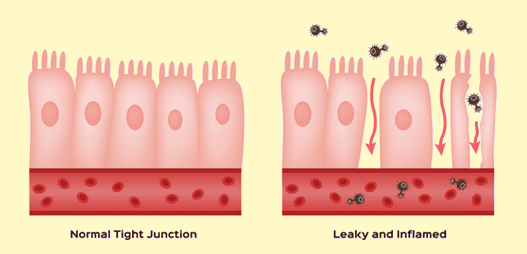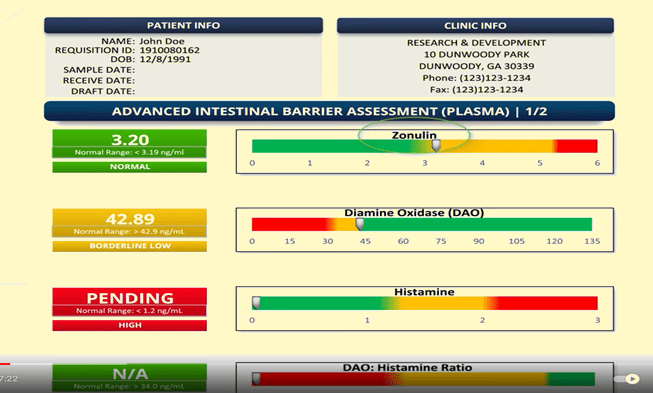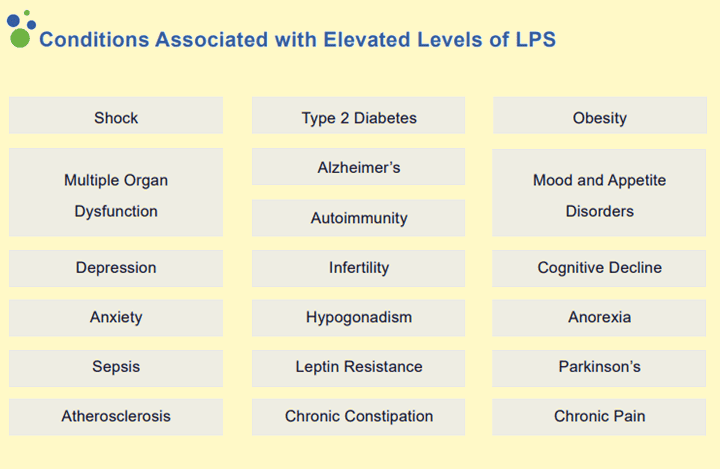
When we think of wheat or bread our minds generally conjure up very happy images and feelings – birthday cakes, delicious sandwiches, mouthwatering pizza, breakfast waffles, and the aroma of fresh cinnamon rolls; wow, so good huh? But then when others think of grains and these foods, dark clouds arise in their minds with thoughts of diarrhea or headaches or heartburn, or eczema or even lupus. As a result of the growing number of individuals that have linked grains to these kinds of problems, word seems to have gotten around and now many, many individuals are going “gluten free”.
But is it really that serious of a problem or is it all just another fad diet where the where the consumer is being preyed upon by fear-mongering alternative practitioners and taken advantage of by the greedy purveyors of gluten-free foods? Look, aren’t grains a part of a healthy diet, particularly whole wheat.
The truth is that there is a large body of evidence indicating that grains, whole grains, and whole wheat in particular, even organic or sprouted, are a serious, very serious contributor to many health conditions, both physical and mental.
Much of the traditional medical community looks at gluten with a unique set of blinders on. The average physician considers the need to avoid gluten grains only if medical tests are positive for celiac disease. But unfortunately celiac disease is now considered to be only one of dozens of conditions or diseases that have been linked to gluten. These are considered non celiac gluten sensitivity (NCSG) diseases or conditions. And NCSG actually represents the majority of problems related to gluten.
So What Exactly is Gluten?
Gluten is a mixture of proteins found in grains and provides elasticity and structure in baked goods. The amount and type of gluten varies with the grain:
- The gluten fraction in wheat is gliadin and contains 69% protein
- The gluten fraction in rye is secalin and contains up to 50% protein
- The gluten fraction in oats is avenin and contains about 15% protein
- The gluten fraction in barley is hordein and contains about 50% protein
- The gluten fraction in corn zein and contains about 55% protein
- The gluten fraction in rice is orzenin and contains about 5% protein
- The gluten fraction in millet is panicin and contains about 40% protein
So from the above list we can see that some grains like corn and oats that are often consumed on a gluten free diet may not be so safe to consume.
Part of the reason the medical community does not see gluten as a significant contributor to the health of their patients has to do with the way most labs test for gluten and gliadin in particular. When the gluten proteins are broken up into pieces, we find a dozen or more very specific protein fragments, any one of which could precipitate very serious inflammation and damage to many different tissues of the body. Yet most commonly, individuals are tested for only one of the fractions, alpha gliadin, and if that is negative they are told: “No worries for you; enjoy your bread and cake, gluten is not causing your health problem.”
When we look at the genetic test now available to determine one’s susceptibility to gluten intolerance, we find that nearly one of three individuals of European descent have the gene for celiac disease (HLA DQ2 and/or HLA DQ8). That represents a whole lot of people with a huge tendency to health problems from gluten.
Now, until the 19th century wheat was usually diluted with other grains, beans or nuts. Pure wheat flour has been milled into refined white flour only during the last couple hundred years. But during the last century, in an attempt to make bigger, fluffier breads and bagels, strains of wheat were developed with much higher gluten content. And now these strains are part of nearly all wheat products available in our grocery stores. And this apparently has had serious consequences.
Not long ago the United States Air Force looked at frozen blood samples of healthy young recruits from 50 years ago and compared their intolerance to gluten to that of recruits today. The study showed that intolerance to gluten is 400% more prevalent today than it was in the 1950s.
But the real concern here is that it is estimated that way over 90% of individuals who have a problem with gluten, don’t even know it. And they go from doctor to doctor taking drug after drug without any decent improvement in their health. Really tragic!
And it is even more tragic when we consider that a review paper published in the prestigious New England Journal of Medicine over a decade ago, listed 55 “diseases” that can be caused by consuming gluten foods. They listed osteoporosis, irritable bowel disease, inflammatory bowel disease, cancer, anemia and fatigue. But it has been shown that rheumatoid arthritis, lupus, multiple sclerosis and almost all other auto-immune diseases have been linked to gluten. But equally, many psychiatric or neurological conditions have been found to have a gluten intolerance link as well. They include, schizophrenia, ADD/ADHD, neuropathy, Parkinson’s disease, autism, dementia, depression, tremors, migraines, and many others.
Because gluten has this nasty ability to induce inflammation in so many individuals, it can be a disease-inducing factor in nearly every tissue of the body. Inflammation from gluten can be found in the liver, kidneys, heart, brain, skin, joints, intestine and even our endocrine organs that produce our hormones.
Yet some will say, “I don’t have any intestinal symptoms, so I couldn’t have a gluten problem.” Unfortunately this could not be further from the truth. While intestinal symptoms are certainly common with gluten, it is not always the case, even when the mucosal lining is already damaged. Many extra-intestinal tissues can be damaged and diseased without intestinal symptoms. And these non-celiac gluten sensitivity illnesses are far more common than celiac disease itself.
When the intestinal lining is damaged from gluten or from other causative agents, small leaks are formed and the intestine becomes much more permeable, letting complex particles out and into the body. These will include bacteria, and food particles to which the body produces an immunological response. The gut becomes leaky due to the damage and leads to autoimmune disease.
But this damage can also be from other parts of the wheat besides gluten. Wheat Germ Agglutinin (WGA) while not technically gluten but rather a lectin, can nevertheless be a very damaging particle in some individuals. It can be pro-inflammatory, immunotoxic, cardiotoxic, and when crossing the blood brain barrier, can be neurotoxic as well. In the brain it can attach to the coating on the nerves, the myelin sheath and potentiate damage to the neurons. In fact, when individuals with problems related to gluten grains share their most problematic complaints, the organ that seems to bear the brunt and give the most frustrating symptoms – the brain! It can be a real downer, influencing mind, mood, thinking, and emotions.
Folks, this is serious stuff. Several years ago Dr. Jonathan Wright, in his monthly newsletter wrote about his visit to Australia in the 1980s. He went to visit Dr. Christopher Reading. In his office he found a chart of over 100 individuals who had consulted Dr. Reading about a common, but “incurable” disease called Systemic Lupus Erythematosus or SLE or better known as lupus. They all had the common symptoms, skin rash, joint pain, fever, etc. However, everyone on this list had been symptom-free, without any medication and with negative blood tests for five or more years. How did he do this? Remarkably, they were all cured when he had them eliminate gluten grains from their diet.
If you have any of the symptoms listed in the Gluten Sensitivity Disease Document and particularly if you have several of them you should get tested. I have selected for your attention the tests provided by Cyrex Labs, Arrays #2 – #5. You should especially consider Array 2 and 3 and then if these are positive, then you could consider following up with Array #4 and possibly #5. Array #2 is helpful in determining if you have a leaky gut (and it can be repaired). Array #3 is, hands down, the most comprehensive evaluation of whether you have a gluten problem.
Array #4 tests for other foods that will often cross-react with gluten as well as other foods that are often brought into the diet to substitute for the grains that have been removed.
Array#5 is simply the most comprehensive evaluation for an auto-immune potential. The usefulness of this Array is that the affected organ or tissue may reveal on-going inflammation 8-10 years before a pathological condition exists with symptoms that require medical intervention. This gives one time to intervene before then to enable the body to interrupt that process before it leads to irreversible tissue damage and disease.
Remember the number three cause of illness and death in the industrialized world is autoimmunity – surpassed only by cancer and heart disease. In the United States, 24 million people have been diagnosed with an autoimmune disease – but only 1/3 of those with autoimmunity know they have it. That means that somewhere around 72 million people are living with an autoimmune disease. It is not being looked for in standard screening tests and our present medical system waits until signs and symptoms are so severe that we already have the beginning of organ failure and irreversible damage.
There are three factors that lead to autoimmunity:
- Genetics – this only means vulnerability to the disease, not that your are necessarily destined to get it
- Environmental triggers – this can include gluten but also things like bacteria, viruses and toxic metals
- Intestinal permeability or leaky gut
You cannot do anything about your genes but you can evaluate for gluten and determine if your gut is leaky. If your gut is leaky it will most likely be the primary dysfunction in your body that leads to symptoms. When this is the case the most fundamental need you have is to repair and seal your intestinal lining and to rebalance you immune system. Don’t put off getting tested if you have symptoms.
If you would like to see a long list of label ingredients that typically contain hidden gluten, go to www.celiac.com .
Other helpful sites include www.celiaccenter.com and www.glutenfreesociety.org











